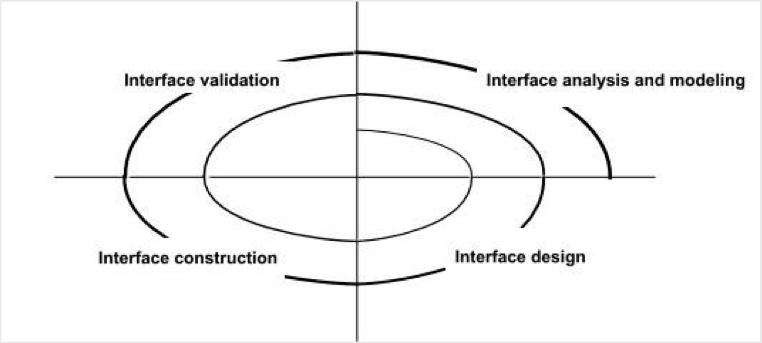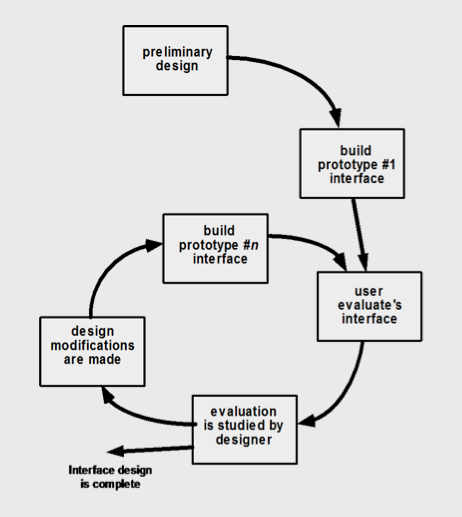NCTUCS 2013-Fall Introduction to Software …
NCTUCS 2013-Fall Introduction to Software Engineering by Professor Feng-Jian Wang
Ch8 - Conventional Techniques of Design
- ORB
- Microsoft COM
- Sun JavaBeans
- Classification
- Enumerated classification
- Faceted classification
- Attribute-value classification
- Indexing
- The Reuse Environment
- A component database capable of storing software components and the classification information necessary to retrieve them.
- A library management system that provides access to the database.
- A software component retrieval system (e.g., an object request broker) that enables a client application to retrieve components and services from the library server.
- CBSE tools that support the integration of reused components into a new design or implementation.
User Interface Design
Typical Design Errors
- lack of consistency
- too much memorization
- no guidance / help
- no context sensitivity
- poor response
- Arcane/unfriendly
Arcane adj. 晦澀難解的
Golden Rules
- Place the user in control
- Reduce the user’s memory load
- Make the interface consistent
Place the User in Control
- not force a user into unnecessary or undesired actions
- Provide flexible interaction
- Allow user interaction to be interruptible and undoable. (undoable - impossible to achieve;)
- Streamline interaction. ()
- Allow the interaction to be customized.
- Hide technical internals from the casual user.
- Design for direct interaction with objects that appear on the screen.
Reduce the User’s Memory Load
- Reduce demand on short-term memory.
- Establish meaningful defaults.
- Define shortcuts that are intuitive.
- The visual layout of the interface should be based on a real world metaphor.
- Disclose information in a progressive fashion.
Make the Interface Consistent
- Allow the user to put the current task into a meaningful context.
- Maintain consistency across a family of applications.
- If past interactive models have created user expectations, do not make changes unless there is a compelling reason to do so.
User Interface Design Models
- User model — a profile of all end users of the system
- Design model — a design realization of the user model
- Mental model (system perception) — the user’s mental image of what the interface is
- Implementation model — the interface “look and feel” coupled with supporting information that describe interface syntax and semantics
User Interface Design Process

Interface Analysis
User Analysis
Task Analysis and Modeling
- find some workflow tools
Analysis of Display Content
Swimlane Diagram
Interface Design Steps
1. define interface objects and actions (operations).
2. Define events (user actions)
3. Depict each interface state
4. Indicate how the user interprets the state of the system
Design Issues
- Response time
- Help facilities
- Error handling
- Menu and command labeling
- Application accessibility
- Internationalization
WebApp Interface Design
- Where am I?
- provide an indication of the WebApp that has been accessed
- inform the user of her location in the content hierarchy.
- What can I do now?
The interface should always help the user understand his current options- what functions are available?
- what links are live?
- what content is relevant?
- Where have I been, where am I going?
Theinterfacemust facilitate navigation.- Provide a “map” (implemented in a way that is easy to understand) of where the user has been and what paths may be taken to move elsewhere within the WebApp.
Effective WebApp Interfaces - by Bruce Tognozzi [TOG01]
- Effective interfaces are visually apparent and forgiving
- Effective interfaces do not concern the user with the inner workings of the system.
- Effective applications and services perform a maximum of work
Interface Design Principles
- Anticipation (預期;期望): A WebApp should be designed so that it anticipates the use’s next move.
- Communication
- Consistency
- Controlled autonomy
- Efficiency
- Focus
- Fitt’s Law
- Human interface objects
- Latency reduction
- Learnability
- Maintain work product integrity
- Readability
- Track state
- Visible navigation
Interface Design Workflow
- Review information contained in the analysis model and refine as required.
- Develop a rough sketch of the WebApp interface layout.
- Map user objectives into specific interface actions.
- Define a set of user tasks that are associated with each action.
- Storyboard screen images for each interface action.
- Refine interface layout and storyboards using input from aesthetic design.
- Identify user interface objects that are required to implement the interface.
- Develop a procedural representation of the user’s interaction with the interface.
- Develop a behavioral representation of the interface.
- Describe the interface layout for each state.
- Refine and review the interface design model.
Aesthetic Design
- Don’t be afraid of white space.
- Emphasize content.
- Organize layout elements from top-left to bottom right.
- Group navigation, content, and function geographically within the page.
- Don’t extend your real estate with the scrolling bar. (?
- Consider resolution and browser window size when designing layout. => Response Design
Design Evaluation Cycle

Share
Donation
如果覺得這篇文章對你有幫助, 除了留言讓我知道外, 或許也可以考慮請我喝杯咖啡, 不論金額多寡我都會非常感激且能鼓勵我繼續寫出對你有幫助的文章。
If this blog post happens to be helpful to you, besides of leaving a reply, you may consider buy me a cup of coffee to support me. It would help me write more articles helpful to you in the future and I would really appreciate it.